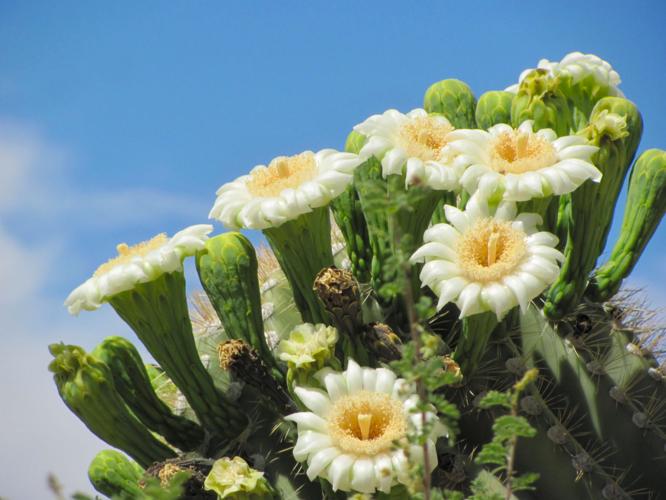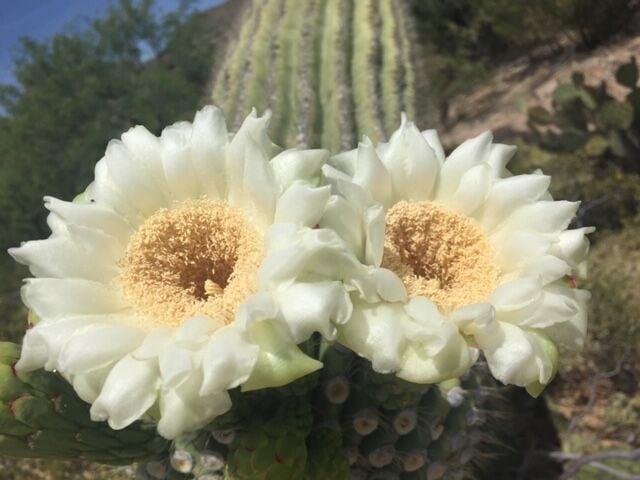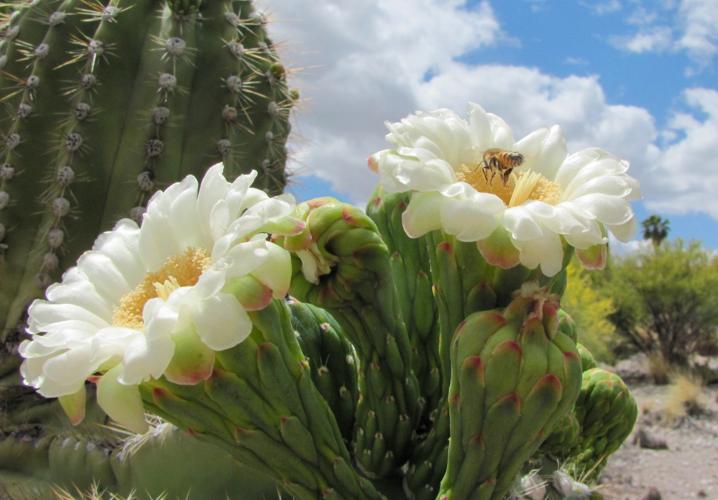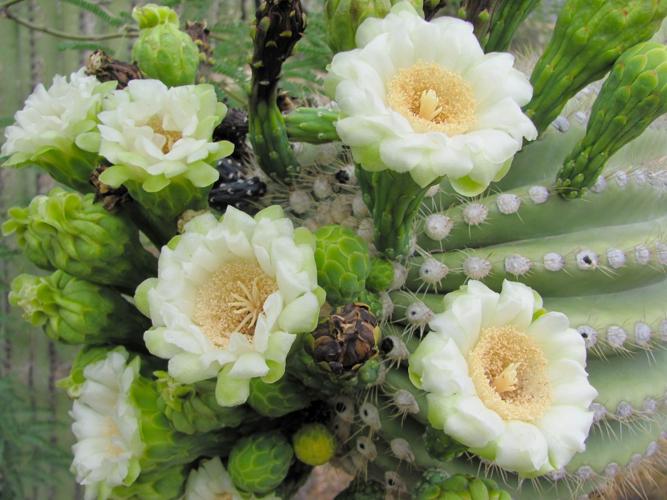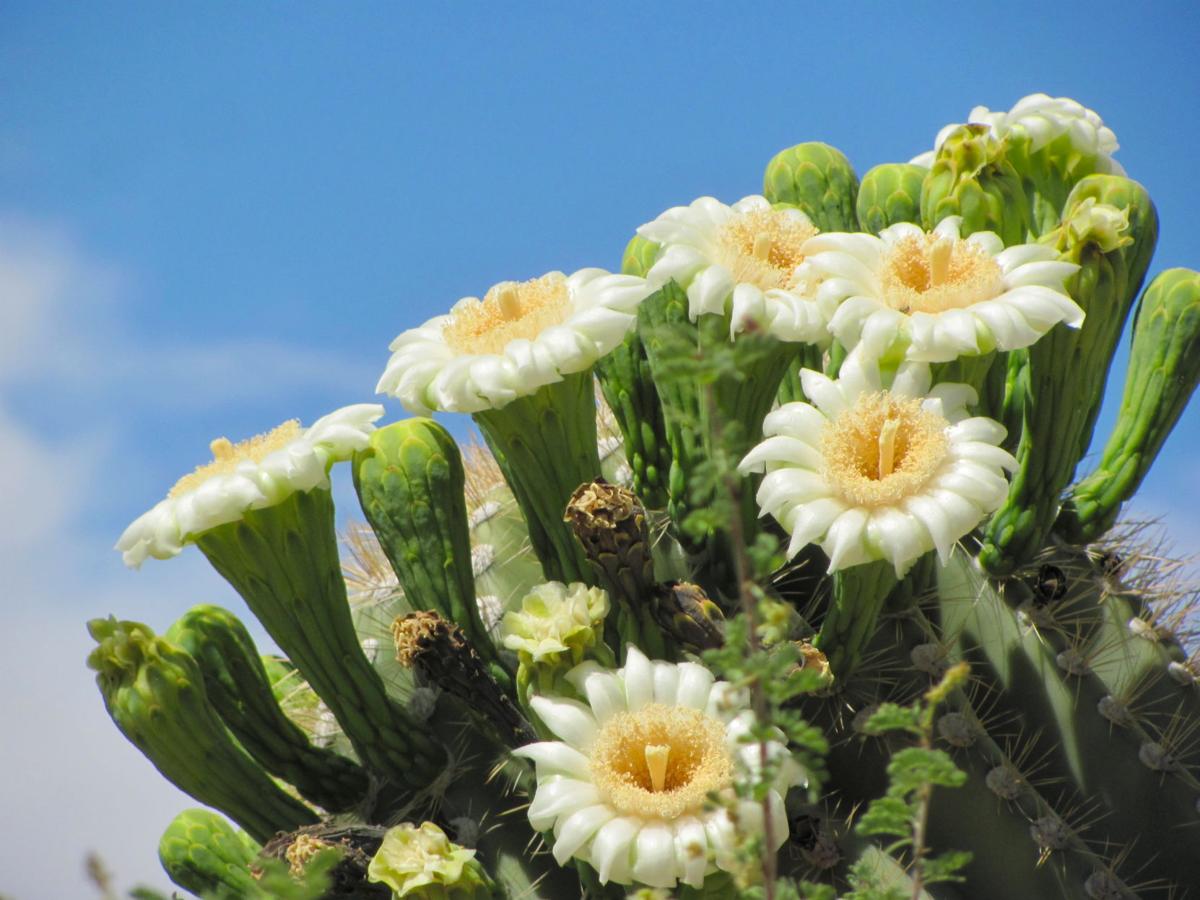You might have noticed our beloved saguaros have been sporting new hairdos lately.
No, they're not growing baby avocados at the crown of their heads. These bulbous green nubs are the buds that bloom into beautiful saguaro flowers this time of year.
Here are a few things you might want to know about these white dazzlers.

Saguaro cacti have spectacular 3-4 inch white flowers with yellow centers.
1. Peak blooming is from early May to early June
We've seen countless saguaros blooming or getting ready to bloom!
2. They have a short lifespan
The flower itself blooms for less than 24 hours, opening at nighttime and remaining open through the following day, according to the Arizona-Sonora Desert Museum.
The whole saguaro, though, can produce many blooms throughout a season.

3. They get a little help from their friends
The saguaro flower relies on a number of desert dwellers to help with the pollination process. At night, that's the lesser long-nosed bat and the Mexican long-tongued bat.
According to the U.S. Forest Service, the bats reach deep into the blossoms for nectar, "covering their hairy heads with copious amounts of pollen that drop onto other flowers as the bats fly from cactus to cactus throughout the night."
During daytime, the flowers are pollinated by bees and birds such as the white-winged dove, according to the Desert Museum.

Peak season for saguaro blooms is typically early May to early June.
4. They smell delightful
Saguaro flowers are often described as having a pungently sweet melon scent. Bats and other wildlife can't get enough.
5. It's the official state flower of Arizona
The brilliant saguaro bloom was designated Arizona's state flower in 1931.
It joins the ranks of other Arizona state symbols including the cactus wren, turquoise and the bola tie.

Saguaro fruit
6. They turn into fruit
Once a saguaro flower has been pollinated, it matures into fruit that splits open when ripened — revealing bright red pulp.
Each piece of fruit contains about 2,000 small black seeds, according to the Desert Museum.

Fun fact: saguaro blooms smell like melon!
7. The fruit is edible
The Tohono O'odham have long harvested saguaro fruit. The National Park Service says, "The harvesting of saguaro fruit by the Tohono O’odham is a centuries-old practice of subsistence, religion, and reaffirmation of their relationship with their traditional environment."
Many native plants, including saguaros, are protected by law. To harvest on private property, you'll need permission from the landowner. If you're on public land, go to the government entity involved to verify if you can harvest.
Saguaro fruit is typically harvested from mid-June through July. The fruit is also a source of food for many desert critters including birds, bats, tortoises, javelinas and coyotes, according to the Desert Museum.
8. You can find blooms all over the desert
You’re apt to see saguaro blooms almost anywhere throughout the Tucson area, from random sidewalks and intersections to desert wonderlands like Saguaro National Park.


